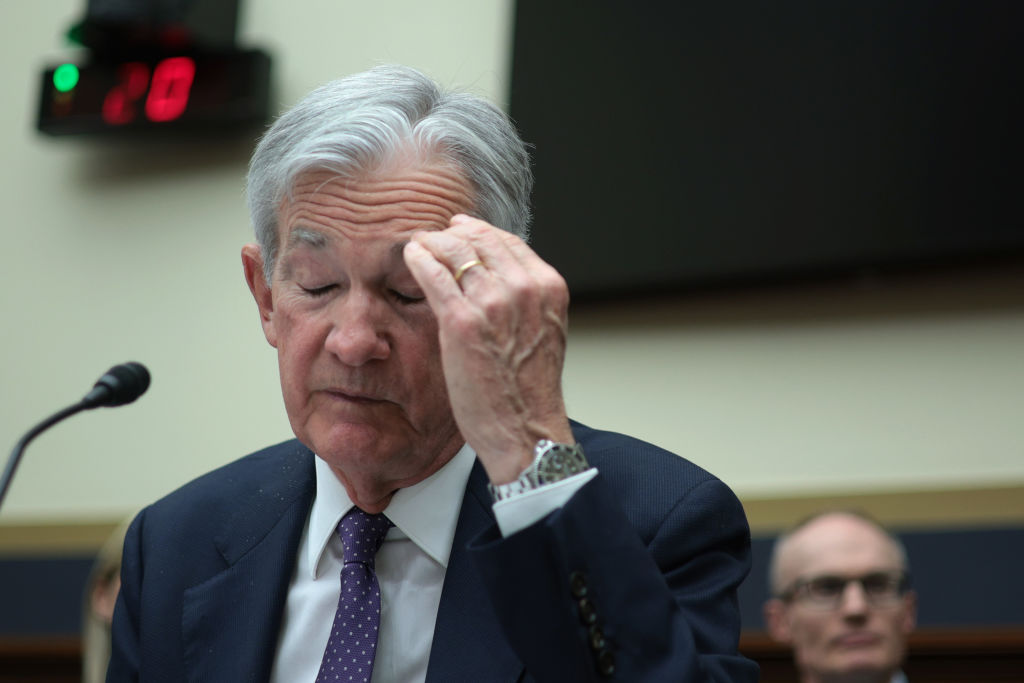Too embarrassed to ask: what is tapering?
Tapering is the reduction in quantitative easing provided by a central bank. But how does it work?
The financial world has a habit of coining new definitions for old words, and then constantly referring to these new usages as if everyone should know what they mean.
One relatively recent such coinage is “tapering”.
“Tapering” relates to central bank policies.
MoneyWeek
Subscribe to MoneyWeek today and get your first six magazine issues absolutely FREE

Sign up to Money Morning
Don't miss the latest investment and personal finances news, market analysis, plus money-saving tips with our free twice-daily newsletter
Don't miss the latest investment and personal finances news, market analysis, plus money-saving tips with our free twice-daily newsletter
Since 2009 and the great financial crisis, central banks have been printing money to buy assets such as government bonds.
This is known as “quantitative easing”, or QE. The aim – or at least, one of the aims – of QE is to reduce the cost of borrowing across the entire economy. This makes it cheaper for those with debts to pay their interest bills.
It should – in theory at least – also make it more appealing for companies to borrow money to invest in expanding their businesses. This in turn should help to boost economic growth.
However, another side-effect of QE has been to drive up asset prices across the board, from bonds to shares to property prices.
As a result, investors tend to like it when central banks add more QE, but aren’t so happy when they reduce it.
It’s not entirely clear who actually coined the term “tapering”, but it sprang into widespread use after May 2013.
That month, Ben Bernanke, who was then the head of the US central bank – the Federal Reserve – indicated in a speech that the central bank was starting to consider reducing the volume of assets that it was buying via QE.
So “tapering” simply describes a reduction in the amount of QE a central bank is doing.
Markets didn’t like this idea, fearing that less QE would spell lower asset prices. The ensuing period of turbulence became known as the “taper tantrum”. This resulted in the Federal Reserve taking several months longer than expected to slow down the pace of QE.
The term “taper” is becoming relevant again today because central banks are now looking at stepping back from the emergency monetary policy they launched during the coronavirus pandemic.
Whether we will see a repeat of the 2013 “taper tantrum” or not, remains to be seen.
To learn more about monetary policy and markets, subscribe to MoneyWeek magazine.
Get the latest financial news, insights and expert analysis from our award-winning MoneyWeek team, to help you understand what really matters when it comes to your finances.
MoneyWeek is written by a team of experienced and award-winning journalists, plus expert columnists. As well as daily digital news and features, MoneyWeek also publishes a weekly magazine, covering investing and personal finance. From share tips, pensions, gold to practical investment tips - we provide a round-up to help you make money and keep it.
-
 Tetragon Financial: An investment trust with stellar returns
Tetragon Financial: An investment trust with stellar returnsTetragon Financial has performed very well, but it won't appeal to most investors – there are clear reasons for the huge discount, says Rupert Hargreaves
-
 How to profit from the markets’ pessimism about Britain
How to profit from the markets’ pessimism about BritainOpinion There was little in the Budget to prop up Britain's stock market, but opportunities are hiding in plain sight. Investors should take advantage while they can
-
 The challenge with currency hedging
The challenge with currency hedgingA weaker dollar will make currency hedges more appealing, but volatile rates may complicate the results
-
 What's behind the big shift in Japanese government bonds?
What's behind the big shift in Japanese government bonds?Rising long-term Japanese government bond yields point to growing nervousness about the future – and not just inflation
-
 Can Donald Trump fire Jay Powell – and what do his threats mean for investors?
Can Donald Trump fire Jay Powell – and what do his threats mean for investors?Donald Trump has been vocal in his criticism of Jerome "Jay" Powell, chairman of the Federal Reserve. What do his threats to fire him mean for markets and investors?
-
 Freetrade’s new easy-access funds aim to beat top savings rates
Freetrade’s new easy-access funds aim to beat top savings ratesFreetrade has launched an easy-access exchange traded fund (ETF) range - here’s how the ETFs work and how they compare to the savings market
-
 Go for value stocks to insure your portfolio against shocks, says James Montier
Go for value stocks to insure your portfolio against shocks, says James MontierInterview James Montier, at investment management group GMO, discusses value stocks and slow-burn Minsky moments with MoneyWeek.
-
 Halifax: House price slump continues as prices slide for the sixth consecutive month
Halifax: House price slump continues as prices slide for the sixth consecutive monthUK house prices fell again in September as buyers returned, but the slowdown was not as fast as anticipated, latest Halifax data shows. Where are house prices falling the most?
-
 Rents hit a record high - but is the opportunity for buy-to-let investors still strong?
Rents hit a record high - but is the opportunity for buy-to-let investors still strong?UK rent prices have hit a record high with the average hitting over £1,200 a month says Rightmove. Are there still opportunities in buy-to-let?
-
 Pension savers turn to gold investments
Pension savers turn to gold investmentsInvestors are racing to buy gold to protect their pensions from a stock market correction and high inflation, experts say


